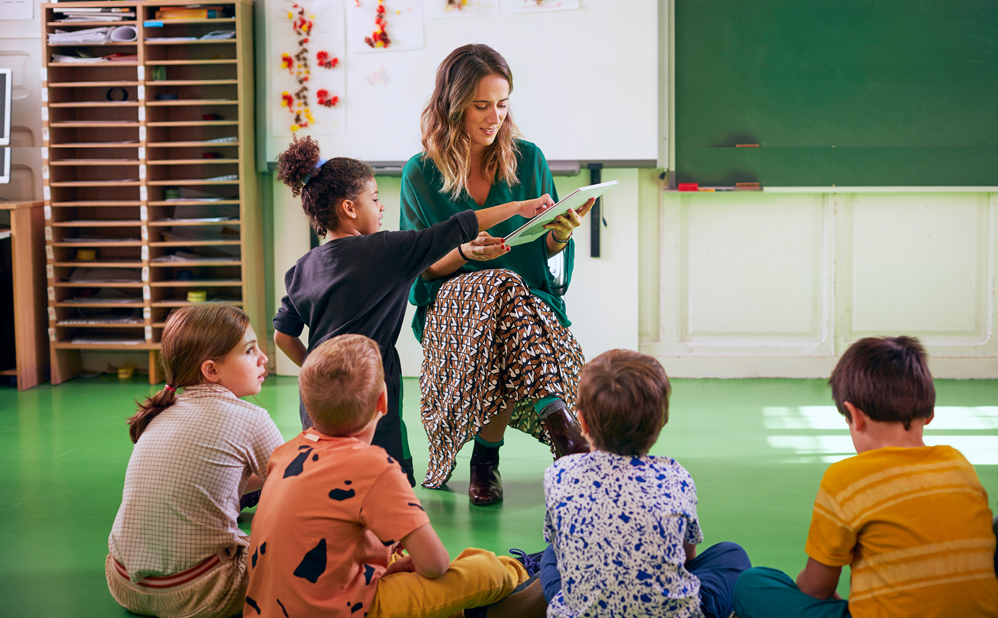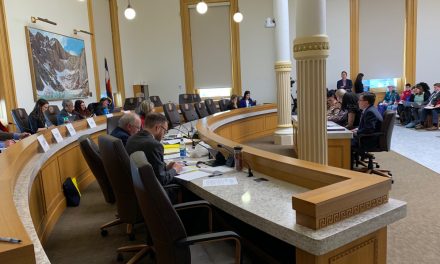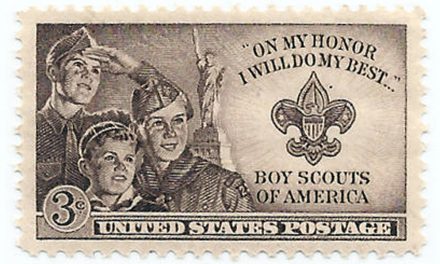Earlier this year, about 50 kindergarten students at a Virginia elementary school sat cross-legged on the classroom floor, listening to a transgender activist read I Am Jazz, a picture book about a boy who believes he’s a girl. The children learned about Jazz Jennings, who makes this claim: “I have a girl brain but a boy body …. I was born this way!”
The reading wasn’t an isolated incident, either. Jazz & Friends National Day of School and Community Readings is an annual event that encourages teachers throughout America to read transgender books to children in schools. Sadly, this event is part of a much larger trend in public education, as children are taught confusing messages about gender and sexuality in classrooms across the nation. These lessons are in direct opposition to objective, scientific reality — and to most parents’ beliefs and values.
Take what happened in Superior, Colorado, for example. Parents filed a complaint after first through fifth grade students watched Queer Kid Stuff YouTube videos. The students then attended the musical presentation “Raven’s True Self,” performed by a transgender choir, about a confused bird embracing its opposite-sex identity.
Legislating confusion
Such lessons often take place outside a school’s optional sex ed classes. In fact, several states now require teaching about LGBT-identified individuals in social studies lessons, and parents often have no way to remove their children from the instruction.
California was the first state to dictate teaching about sexual orientation and gender identity across the curriculum. In 2011, the state legislature passed the Fair, Accurate, Inclusive, and Respectful (FAIR) Education Act. The law revised existing statutes to require that schools teach children about the “contributions of lesbian, gay, bisexual, and transgender Americans … to the economic, political, and social development of California and the United States of America.” Since then, Illinois, New Jersey and Colorado have pursued similar legislation.
California’s law took effect in 2012, but new textbooks that accommodate the mandate take years to produce and are still being introduced. Because California is the country’s largest textbook purchaser, many publishers tailor their books toward that state’s curriculum requirements. Other states often adopt these same teaching materials.
The new books contain many instances of inappropriate content. For example, one social studies textbook teaches second graders about drag queen Jose Julio Sarria, who “told people he was gay and that sometimes he dressed as a woman. He was the first person to do this when running for office.” The children are then asked to write about how Sarria’s honesty was inspirational to others.
Confusion Across America
In Marion County, Oregon, an elementary school teacher kept an 8-year-old boy back from recess and showed him videos and books about being transgender. Because of the lessons, the boy struggled with anxiety and depression, the boy’s parents said, and was confused about whether he was going to turn into a girl.
In Connecticut, two high school boys, who claim they are girls, took first and second in the girls’ 55-meter dash at the 2019 state indoor track championships. Seventeen states allow high school athletes to compete in sex-segregated sports according to their “gender identity.”
The Scholastic Corporation publishes and distributes inexpensive books for children, often sold through school fairs and catalogs. They now distribute LGBT books for young readers, such as And Tango Makes Three, about two male penguins who raise a baby penguin together.
Sex ed and transgender ideology
In addition to regular classroom lessons that contain unsuitable messages, confusing content in sexual education curriculum also concerns many parents. California’s legislature passed the California Healthy Youth Act (CHYA), which took effect in 2016. This law requires school districts to provide students with comprehensive sexual health education, with an increased focus on gender identity themes. That same year, the state’s department of education began revising its entire Health Education Framework; the final document was adopted in May. The guidelines suggest that children begin learning about “gender expression and identity” in kindergarten because “some children in kindergarten and even younger have identified as transgender or understand they have a gender identity that is different from their sex assigned at birth.”
Even before the guidelines were finalized, local school districts adopted curriculum to comply with the CHYA and the new Health Education Framework. Several school districts chose the “Rights, Respect, Responsibility” curriculum, also known as “3Rs.” This curriculum “adheres to the concept of a gender spectrum,” meaning there aren’t just two sexes but a wide variety of gender identities, and people are the gender they believe they are. Instruction about this begins in kindergarten.
It would be easy to continue on with other egregious examples of sensitive sexual issues discussed with children in public schools. But the bottom line is this: Parents need to be aware of the unhealthy messages being taught in their kids’ classrooms.
What You Can Do
School lessons about gender, sexuality and marriage have changed dramatically, moving away from truth and toward darkness. But you can graciously and courageously take a stand for truth. In doing so, you are helping to protect your children and inform other parents in your community. Here are a few starting points:
1. Be proactive
Give your children a solid understanding of God’s design for marriage, relationships and sexuality. Teach your children that people have a special place in God’s creation because He made us in His image, male and female. Both sexes are good and valuable, but they are also unique and different. This basic foundation gives you a platform from which to go deeper about God’s intent for relationships, sexuality and marriage.
2. Be prepared
Stay educated on these issues, anticipating that your children will encounter these sensitive topics at some point. If you’re prepared ahead of time, you can respond calmly with relevant information and insight. As you engage with your children, ask questions and encourage an ongoing dialogue, especially with older children.
3. Be involved
Stay active and engaged in your children’s school. And remember: You are not alone. Many like-minded parents are concerned about what their children are being taught. In California, parents united to explore and then protest against inappropriate social studies lessons and sexuality education. Concerned citizens up and down the state spoke before school boards, created petitions and pulled their children out of sexual education classes.
How To Talk To Your Kids
If your kids are in public school, it’s likely they will be presented with confusing messages about sexuality. Here are some suggestions on how you can respond to those messages in an age-appropriate way.

Preschoolers and Kindergarteners
Your kindergartener’s teacher reads her a book about different kinds of families — including ones with two moms and two dads. At this age, you don’t need to go into a great deal of detail about homosexuality or sexual activity. Simply point back to what she knows about God’s design for marriage. Then you might say something like, “But not everyone obeys God and follows His plan. Some people have changed marriage to be different from what God says. We can still be kind to people, even when we disagree with them.”

Grade Schoolers
Your fourth grade son says he learned in school there aren’t just two sexes, but many genders, and a girl can be born with a boy’s body. You might respond by asking questions: “Where did you hear that? What do you think about this lesson?” If you’re upset, that’s OK, but assure your child that you’re not angry with him; you’re unhappy with the school teaching things that aren’t true. Don’t feel like you have to explain everything at once about transgender ideology, but say something like, “Some people feel confused about being a boy or a girl. God made two sexes — male and female. But when sin entered the world, pain and confusion became part of our lives. We don’t have to agree with confused people, but we can still treat them with love and respect.”

Middle and High Schoolers
Your middle school son just finished “comprehensive sexual education” in his health class. Somehow you missed the flyer from the school announcing that fact. Now would be a good time to review and discuss what he’s been taught, including any materials about sexual orientation and gender identity. With teens, you can discuss deeper concepts such as the conflict between a Christian worldview and a secular one. You could also explore books and resources together that explain what research shows and what the Bible says about sexuality.
Download two free online booklets: “How to Talk to Your Children About Homosexuality: A guide for parents” and “When Transgender Issues Enter Your world.” Each has ideas for discussing these critical topics with children. TheDailyCitizen.org/resources






